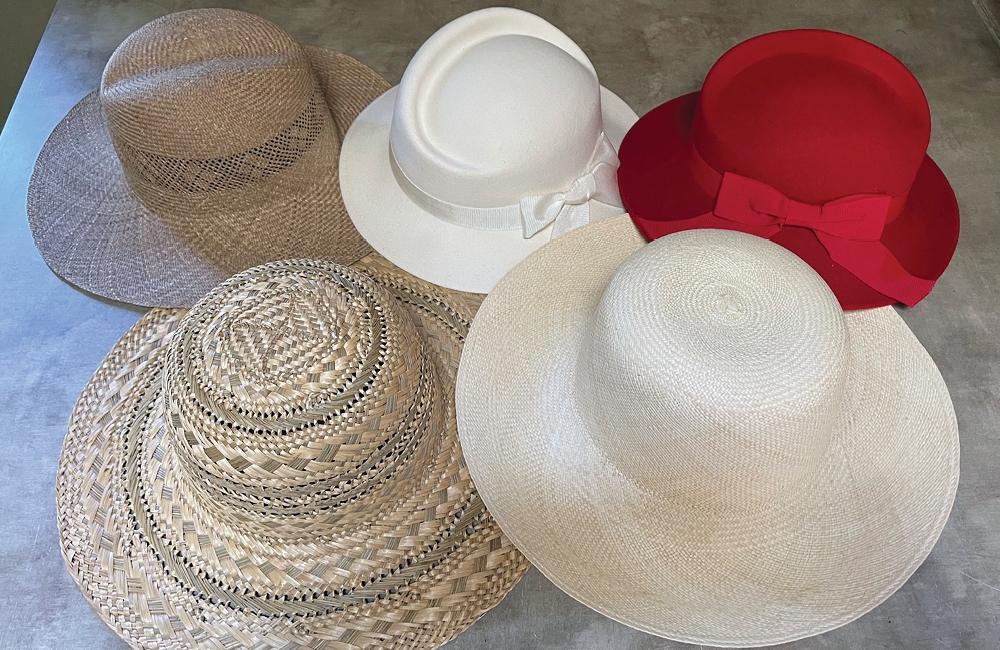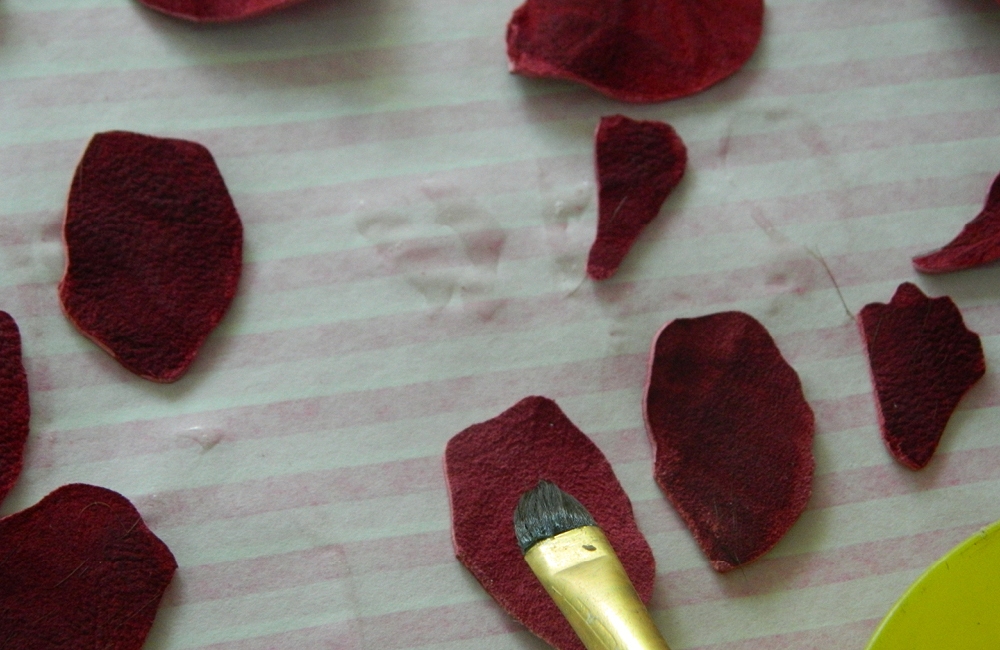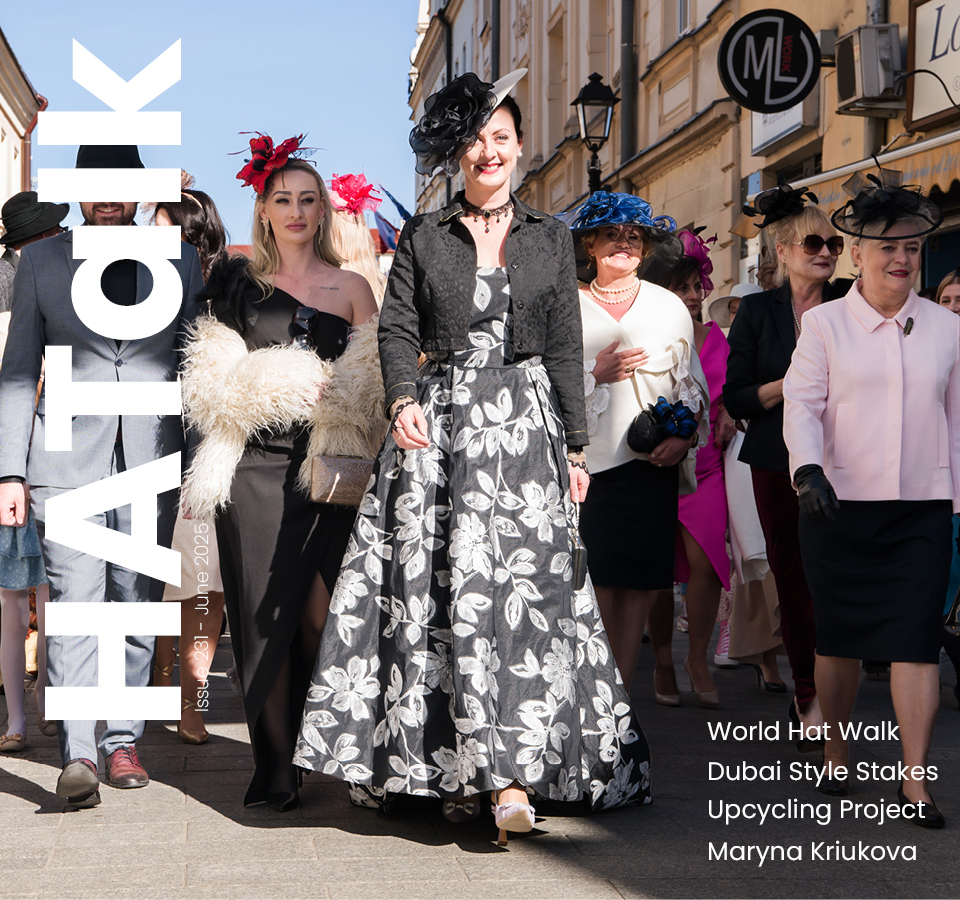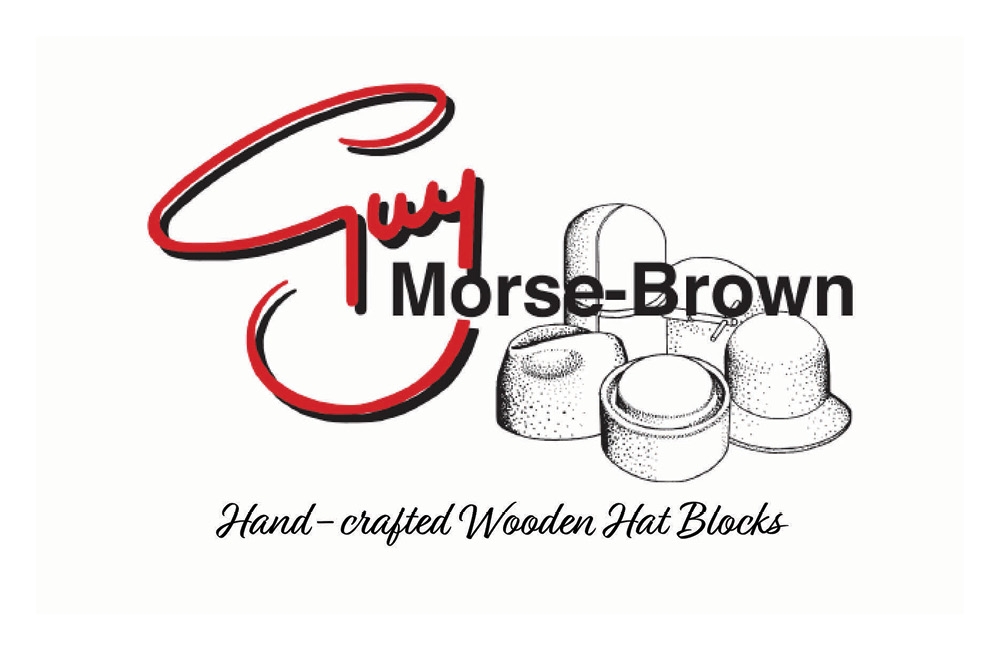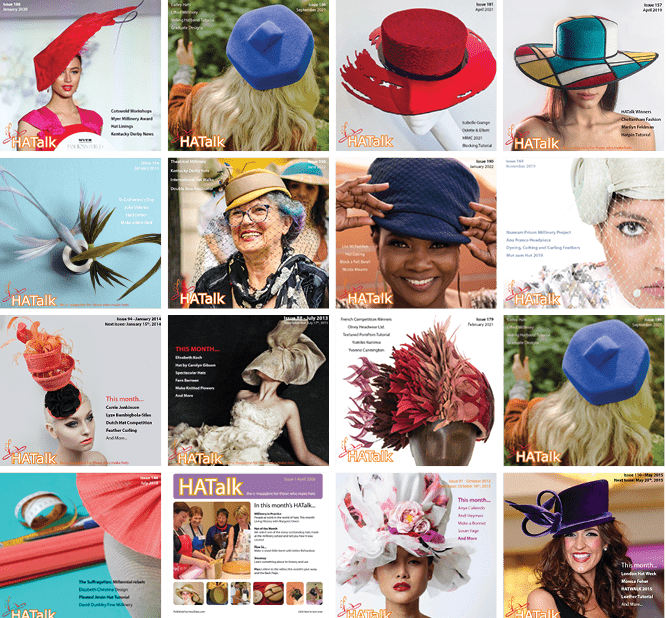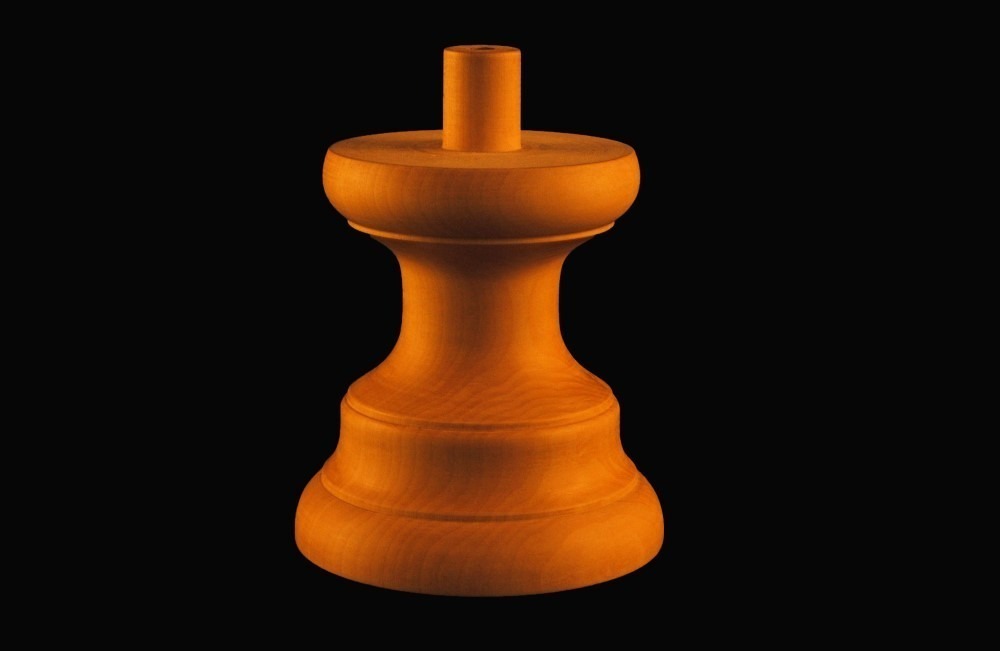Blog / Working with Fosshape®
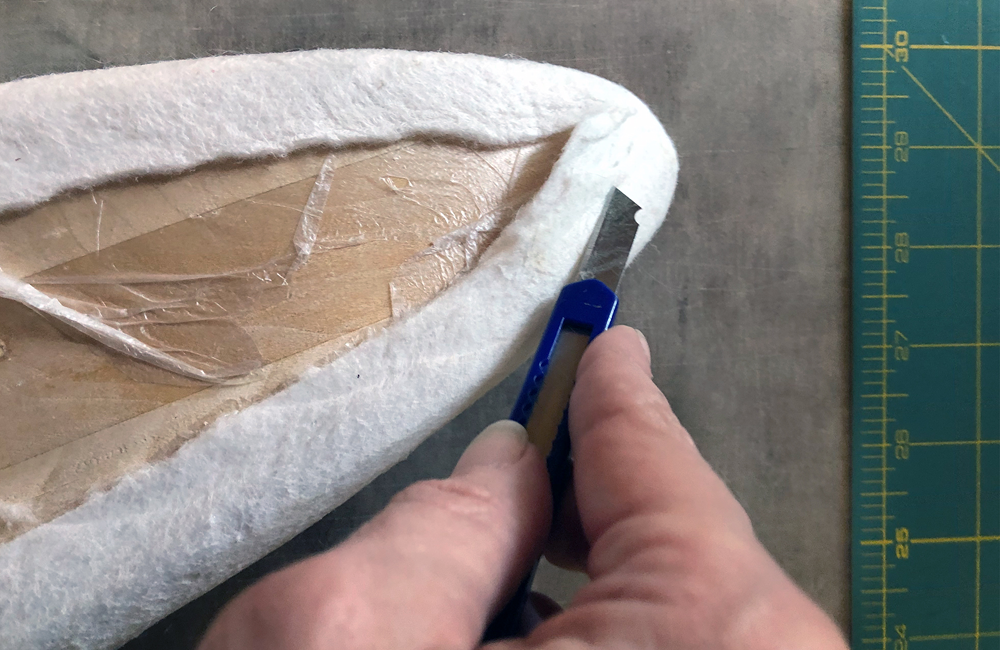
Working with Fosshape®
Fosshape® for Hat Making
There are many thermoplastics that have interesting applications in millinery, but one of the most useful is Fosshape®.
Fosshape® has been referred to as a buckram replacement, as it has a similar strength to buckram without the drying time. It resembles a thick felt and is sold by the yard by millinery suppliers like Humboldt Haberdashery.
The Benefits of Fosshape®
This useful thermoplastic doesn’t fray and is lightweight and sewable. In millinery, it is usually used as a base and covered with fabric or leather, but it can be dyed and painted on its own as well. Fosshape® comes in three densities – 300, 400, and 600 – with 300 being the thinnest and easiest to work with for millinery.
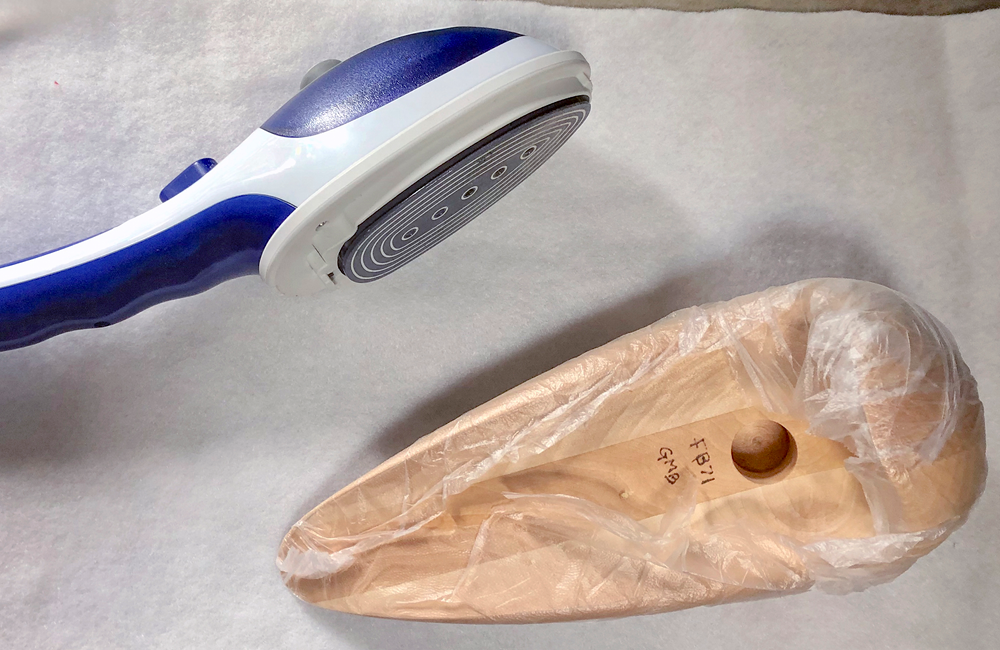
A handheld steamer with a flat plate is the best thing to use to heat this fabric. My favorite thing about this thermoplastic is that it requires no water, stiffener or drying time, so using it greatly reduces the labor and time needed to block a hat base.
Blocking with Fosshape®
Fosshape® is especially useful for odd or difficult hat block shapes. Because it will not fray and sticks to itself, you can cut out the bulky areas, overlap the seams and seal with steam and pressure.
As always, you will want to protect your hat block before you begin. Because you will be applying a higher amount of heat directly to the block, it is better to use aluminum foil or a Teflon freezer bag to cover your block to avoid any potential melting issues.
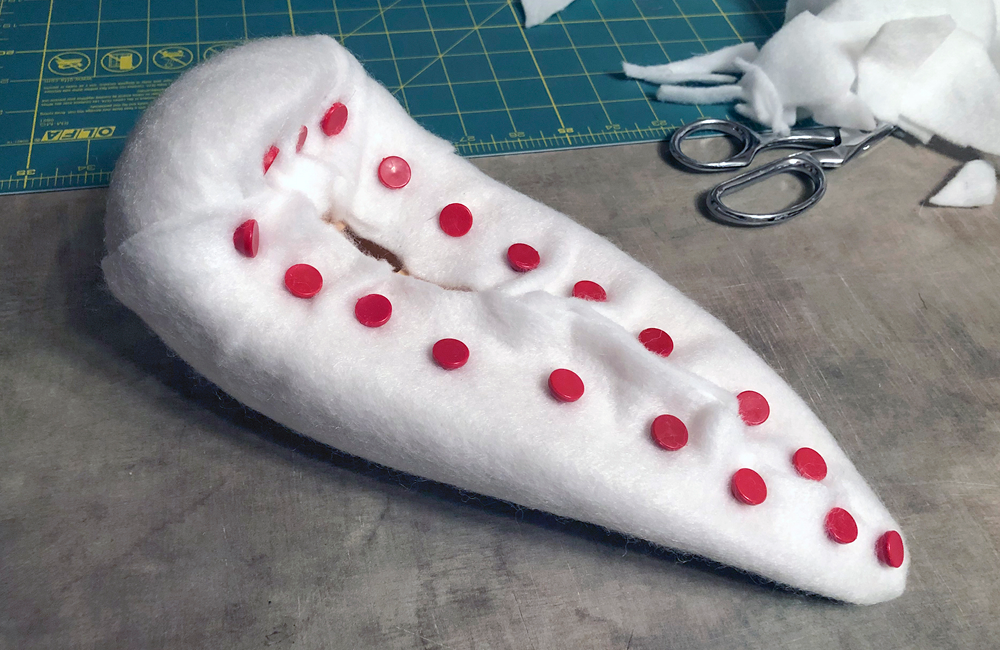
You do not want to stretch the fabric tightly around the block like you would when blocking with a traditional millinery material. Instead, pull just enough to hold the fabric flat against the block and secure with pins. As you steam the Fosshape®, it will retract and stiffen into more of a soft plastic shell. Be really careful not to burn yourself when heating thermoplastics. Wearing heat-proof gloves is highly recommended!

For step-by-step instrcutions on how to block this thermoplastic material, check out our Fosshape® Hat Base Project. A Fosshape® millinery base can be covered and trimmed with a fabric like silk or leather, just like a traditional buckram base. And the best part is, you can create it in a fraction of the time!
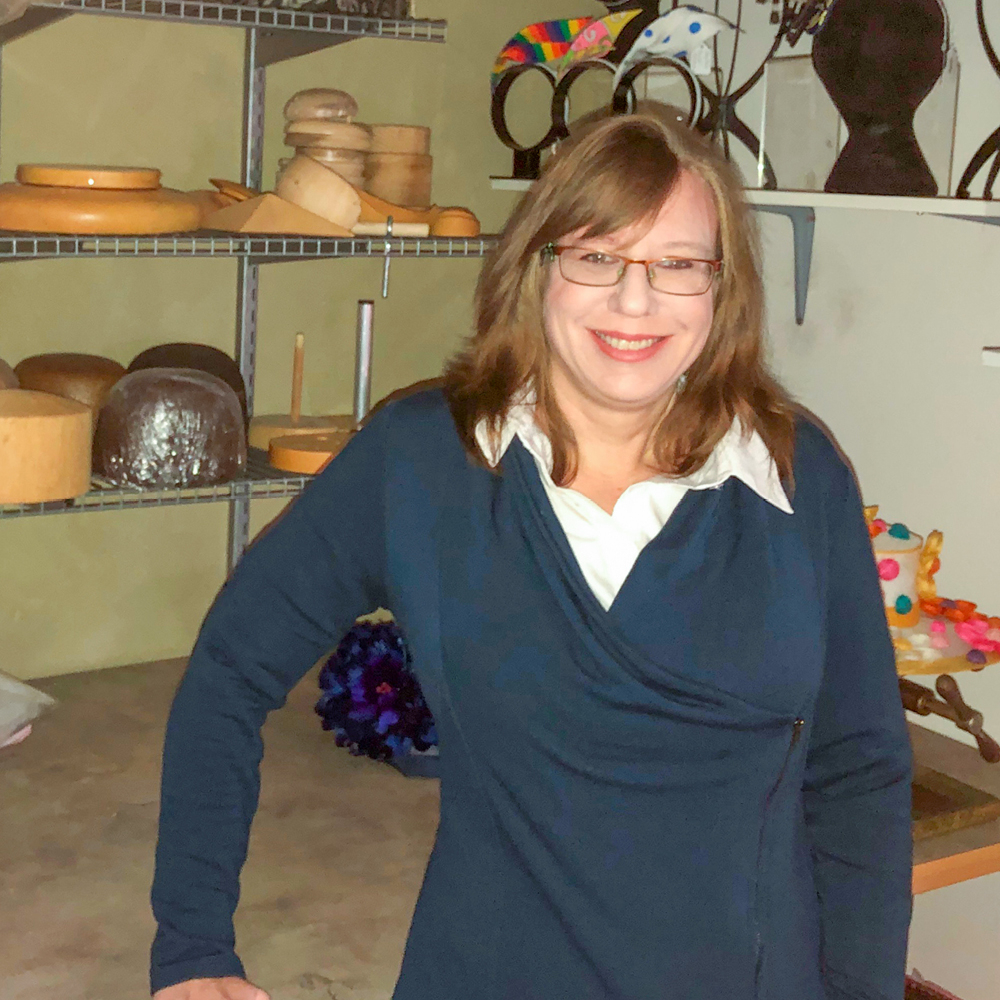
About the Author
Amy Fowler is the creator of the bespoke, California-based Millinery by Amy Fowler label. She also runs Humboldt Haberdashery, an online millinery supplier.
See Amy’s full bio HERE.
Popular Articles
Latest e-Magazine
Featured Supplier

Working with Fosshape®
Fosshape® for Hat Making
There are many thermoplastics that have interesting applications in millinery, but one of the most useful is Fosshape®.
Fosshape® has been referred to as a buckram replacement, as it has a similar strength to buckram without the drying time. It resembles a thick felt and is sold by the yard by millinery suppliers like Humboldt Haberdashery.
The Benefits of Fosshape®
This useful thermoplastic doesn’t fray and is lightweight and sewable. In millinery, it is usually used as a base and covered with fabric or leather, but it can be dyed and painted on its own as well. Fosshape® comes in three densities – 300, 400, and 600 – with 300 being the thinnest and easiest to work with for millinery.

A handheld steamer with a flat plate is the best thing to use to heat this fabric. My favorite thing about this thermoplastic is that it requires no water, stiffener or drying time, so using it greatly reduces the labor and time needed to block a hat base.
Blocking with Fosshape®
Fosshape® is especially useful for odd or difficult hat block shapes. Because it will not fray and sticks to itself, you can cut out the bulky areas, overlap the seams and seal with steam and pressure.
As always, you will want to protect your hat block before you begin. Because you will be applying a higher amount of heat directly to the block, it is better to use aluminum foil or a Teflon freezer bag to cover your block to avoid any potential melting issues.

You do not want to stretch the fabric tightly around the block like you would when blocking with a traditional millinery material. Instead, pull just enough to hold the fabric flat against the block and secure with pins. As you steam the Fosshape®, it will retract and stiffen into more of a soft plastic shell. Be really careful not to burn yourself when heating thermoplastics. Wearing heat-proof gloves is highly recommended!

For step-by-step instrcutions on how to block this thermoplastic material, check out our Fosshape® Hat Base Project. A Fosshape® millinery base can be covered and trimmed with a fabric like silk or leather, just like a traditional buckram base. And the best part is, you can create it in a fraction of the time!

About the Author
Amy Fowler is the creator of the bespoke, California-based Millinery by Amy Fowler label. She also runs Humboldt Haberdashery, an online millinery supplier.
See Amy’s full bio HERE.
